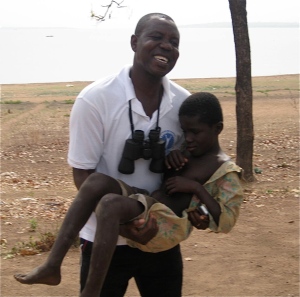Currently, the Department of Homeland Security (DHS) is the sole authority on deciding whether asylum seekers are granted refuge in the United States. A checks and balances system does not exist to ensure that asylum seekers’ rights are being preserved. Consequently, asylum seekers are detained for indefinite periods until the DHS determines whether they are a national threat.
Here’s a brief overview of U.S. Policies Governing Asylum Seekers: Before the terrorist attacks on September 11, the Immigration and Naturalization Service (INS) oversaw the entry of legal and illegal immigrants into the United States. It was not an independent entity. The INS worked cooperatively with the United Nations, the Department of State, and the Department of Health and Human Services. It was divided into four divisions that were responsible for operations and policy management, detention enforcement, and naturalization services.
In the aftermath of 9/11, national security escalated. In an attempt to protect the U.S. from terrorists entering the country unnoticed, President Bush transferred all services and enforcement missions provided by the INS and border control to the Department of Homeland Security in March 2003. The DHS became “jailer and judge.” Parole decisions are made by the DHS, which is the detaining authority. There is no independent immigration judge to determine if these decisions are just and there is no policy ensuring prompt review of parole requests.
The combination of these factors results in enormous numbers of asylum seekers being detained for excessive amounts of time. In 2003, 16,000 asylum seekers were detained within the United States. Average length was 10 months with the longest reported period being 3.5 years. Presently, there are approximately 5,000 asylum seekers being detained daily.
The United States must provide a more objective review process; warranting that asylum seekers are not detained longer than necessary and human rights are upheld. In order to reduce prolonged detention of asylum seekers, a bill must be passed through Congress mandating review of parole requests within 48 hours by an independent immigration judge. Additionally, Human Rights First proposed the idea of creating a refugee protection position within the Department of Security to ensure that the DHS upholds international and national standards for protecting refugees. Someone with experience in asylum and judicial law should fill this position. This person would serve as a liaison between “judge and jailer” and advocate for asylum seekers.
Finally, an Immigration and Refugee Board should be established to ensure that decisions made by the DHS are processed justly and efficiently. This board should possess compassionate and culturally competent members committed to preserving the safety and dignity of asylum seekers. This board is necessary to hold the DHS accountable as they process cases seeking asylum.
It is absurd that the Department of Homeland Security is the sole authority determining the fate of asylum seekers. Asylum seekers deserve to have their cases objectively reviewed by an institution committed to providing them with bona fide refuge. An accountability system must be established to uphold the personal rights of asylum seekers – keeping them from prolonged detention. Although national security needs to be preserved, human rights need not and must not be violated in the process.
 I recently read the book This I Believe, a collection of essays taken from the NPR program initially launched by Edward R. Murrow in the 1950s. Naturally, this prompted my own reflection on what belief I would want to proclaim to the world in 200 words or less.
I recently read the book This I Believe, a collection of essays taken from the NPR program initially launched by Edward R. Murrow in the 1950s. Naturally, this prompted my own reflection on what belief I would want to proclaim to the world in 200 words or less.
 Many of you have asked, “How do you actually rescue a trafficked child from slavery?” In this post, I will do my best to explain the process. (Thank you, Liz, for your amazing editing.)
Many of you have asked, “How do you actually rescue a trafficked child from slavery?” In this post, I will do my best to explain the process. (Thank you, Liz, for your amazing editing.)
 Recently, Touch a Life partnered with PACODEP, City of Refuge and Not For Sale to rescue Teiko, a 6 year old trafficked girl, from an island community on Lake Volta. Lake Volta is home to thousands of child slaves who work 12-16 hour days on fishing boats. The majority of these children are trafficked from various regions both inside and outside of Ghana and receive no health care and no education.
Recently, Touch a Life partnered with PACODEP, City of Refuge and Not For Sale to rescue Teiko, a 6 year old trafficked girl, from an island community on Lake Volta. Lake Volta is home to thousands of child slaves who work 12-16 hour days on fishing boats. The majority of these children are trafficked from various regions both inside and outside of Ghana and receive no health care and no education.